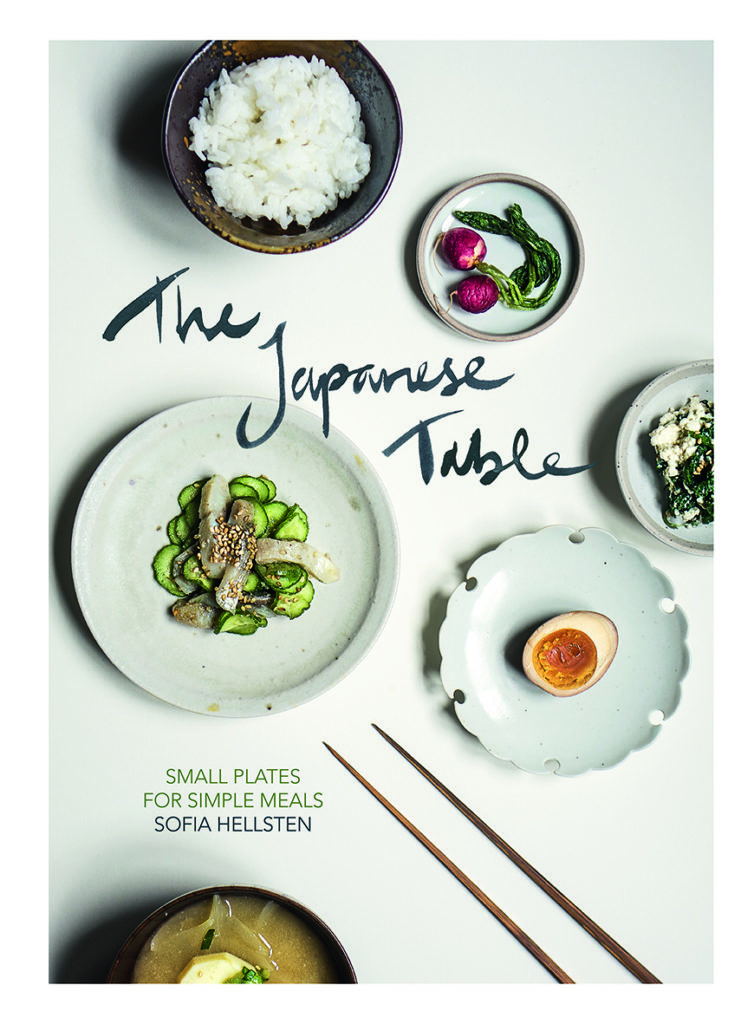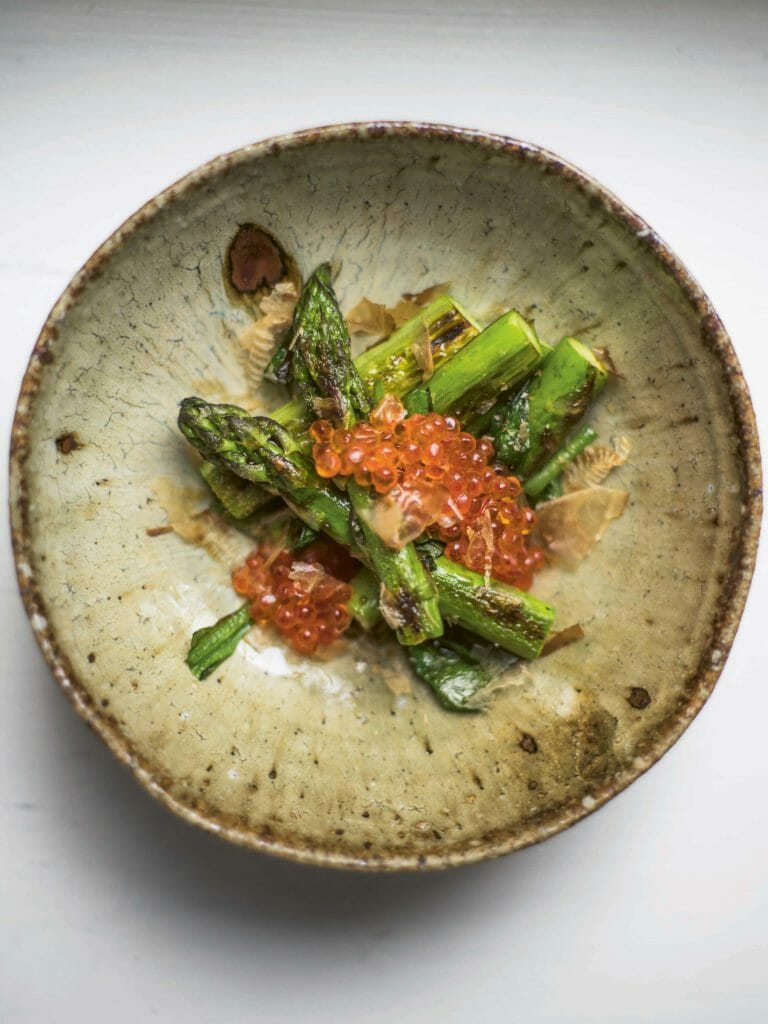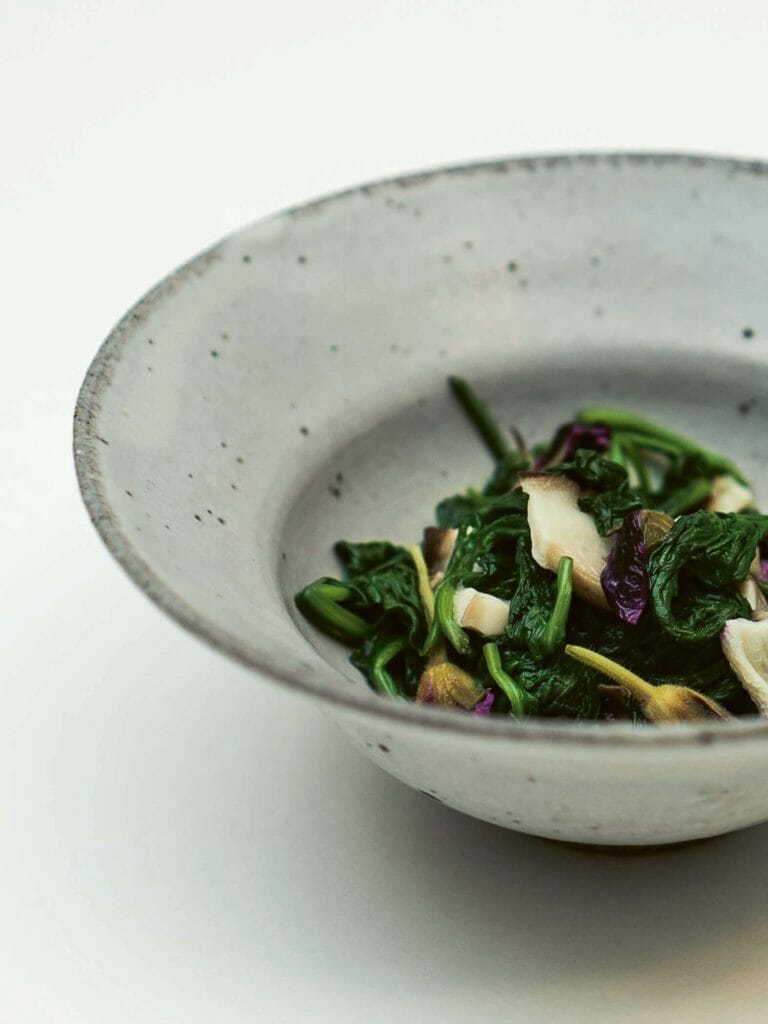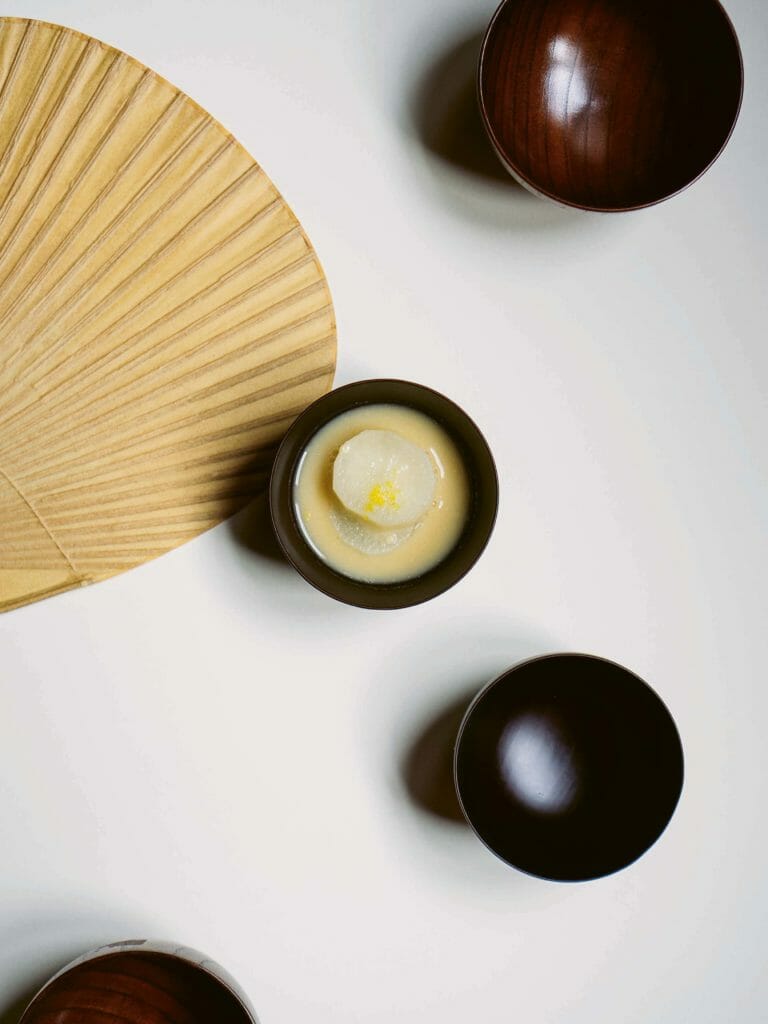Twice a month, our writer cooks from the book and decides if these farm-to-table recipes are worth the investment.

I’ve always found the ritual of a Japanese meal, with its orderly mindfulness and colorful little dishes, to be seductive when I’m being served at a restaurant, and yet too intimidating to attempt at home. Swedish author Sofia Hellsten attempts to unravel this enigma in her book, The Japanese Table (Hardie Grant; $29.99; out January 21). The book centers on the ichijuu-sansai tradition, the “one soup, three dishes” format that makes up a home meal when paired with rice. Along with simple soups, the recipes focus on small plates mainly created around fish, eggs or seasonal vegetables. There’s also a chapter on tea, as well as a lot of cultural information around serving the meal. Recipes are short, and while they don’t need a lot of hands-on time, many do require some sort of overnight preparation. There are a few vegan recipes in here, but vegetarians will find it tricky to navigate around all of the fish ingredients.
I opted to try the recipe for daikon with white miso and yuzu, in which thick coins of white Japanese radish are simmered with a piece of konbu seaweed, then covered and left overnight. The next day, miso is added to jut the broth, heated very gently, and seasoned with soy, with the daikon then added back just to heat through. Mirin was listed in the ingredients but not in the directions, so I hedged my bets and added it with the soy. To serve, yuzu or lemon zest is grated on top. It was very straightforward, and yet this ungainly, bland vegetable was transformed into something special.
I believe the best cookbooks are more than just a collection of recipes—they give you context for what you’re about to prepare, and The Japanese Table does just that. Even if you’re not about to serve a full Japanese dinner, many of the recipes will make wonderful accompaniments for a more North American meal.
Wendy Underwood tests out cookbooks weekly on Instagram at @kitchenvscookbook.
Excerpted from The Japanese Table by Sofia Hellsten. (C) 2020 Reproduced by permission of Hardie Grant. All rights reserved.
Asparagus & ikura
Serves 4
Even though we eat quite a substantial amount of salmon in Sweden, the roe is not something you’d come in contact with very often. In Japan, it is known as ikura and you often find it both on sushi and or as part of a donburi – a bed of rice covered in heaps of the small orange spheres. I love how they pop in your mouth! They are both fun to eat and beautiful to look at. This combination is a buttery, smoky sensation with the crisp asparagus as a pleasing contrast.
8 asparagus stems
1 spring onion (scallion)
3–4 tablespoons salmon roe
a dash of soy sauce
a pinch of bonito flakes
vegetable oil, for frying
Start by cleaning the asparagus and breaking off the bottom of the stems to get rid of the woody parts – if you try bending them close to the root they will easily snap off at the right place. Cut or break each stem into three pieces and set aside. Wash the spring onion and cut into 2 cm (¾ in) pieces, cutting into shorter pieces as you get closer to the root.
Heat a frying pan (skillet) over a medium–high heat, add a dash of oil and then add the asparagus. Swirl the pan while you fry the pieces for about 2 minutes, making sure they do not burn. Add the spring onion and fry together until the asparagus turns lightly golden but still has a little bite. It should still be firm but without a raw core.
Spoon the vegetables onto plates, add a spoonful of salmon roe, a dash of soy sauce and a pinch of bonito flakes on top. Et voila.
If you want to add another dimension of smokiness, the asparagus can also be charcoal barbecued and the spring onion fried separately.
Spinach ohitashi with shiitake
Serves 4
Spinach ohitashi is a standard at the Japanese table and is almost impossible to mess up. Ohitashi means ‘to steep vegetables in a dashi-based sauce’, so basically this is spinach with an umami-packed sauce. It’s a light, healthy dish, which I tend to return to again and again. It’s also a great dish to make ahead, as the greens benefit from soaking in the dashi.
VEGETABLES
4 shiitake mushrooms, about 25 g (1 oz)
500 g (1 lb 2 oz) spinach, baby or regular
DASHI
100 ml (3½ fl oz/scant ½ cup) water
2 tablespoons sake
4 tablespoons mirin
1 teaspoon dashi powder
2½ tablespoons soy sauce
TO SERVE
violets (or other edible flowers when in season)
irigoma, or toasted sesame seeds (optional)
Clean any dirt off the shiitake mushrooms using paper towels, then cut into small pieces.
Bring the water for the dashi to the boil in a saucepan, then blanch the mushrooms for 45 seconds. Lift them out of the water and rinse under cold running water until cold. Be sure to keep the blanching water.
Add the dashi ingredients to the reserved water and bring to a gentle boil, then set aside to cool.
Bring another large saucepan of water to the boil while you wash and trim the spinach. If you are using violets, blanch them in the water for about 15 seconds, then take out and rinse in cold water. Put the spinach into the same boiling water and blanch for about 40 seconds. Remove and quickly rinse in cold water until completely cool. Use your hands to squeeze out any excess water from the spinach. If using regular spinach, cut the leaves into 4 cm (1½ in) pieces.
Mix the greens with the dashi and set aside to soak in the liquid for at least an hour. They will keep in the refrigerator for up to 3 days.
When ready to serve, arrange the vegetables in four small bowls and top with either blanched flowers or toasted, lightly ground sesame seeds.
If you are in a hurry, it’s okay to substitute the dashi with a splash of good-quality soy sauce.
Daikon with white miso & yuzu
Serves 4
A few years ago, I was invited to a culinary event in Tokyo that was wholly dedicated to the Japanese Buddhist cuisine shōjin ryōri, a type of vegan food usually served at temples around the country. It is a way of cooking that reduces waste to an absolute minimum, while the seasoning of dishes is achieved using only products from the vegetable world. During the event, a prominent Kyoto chef cooked a simple vegetable dashi based on the principles of shōjin ryōri. While tasting it, I was stunned to silence – never had I imagined that just a selection of vegetables could bring out such depth of flavour. This recipe came about in a pursuit to explore shōjin ryōri a little further, placing one of my favourite vegetables, daikon, at the centre and then dressing it with a sweet miso. It is a thick, creamy soup, which requires a little more effort and preparation in advance, but the result is beautiful. Placing it on the table almost feels like giving someone a small present with a citrusy perfume.
8 cm (3½ in) piece of daikon
4 cm (1½ in) piece of konbu
200–300 ml (7–10 fl oz/scant 1–1¼ cup) water
2 tablespoons white miso paste
sea salt, to taste
1½ teaspoons soy sauce
2 tablespoons mirin
yuzu or lemon zest
PREPARING THE DASHI
Wash and peel the daikon, then cut it into four 2-cm (¾ -in) thick slices.
Put the daikon, cut-side down, in a heavy-based pan with the konbu.
Add enough of the water just to reach the top of the daikon. Bring slowly to the boil, then reduce the heat and simmer for 30 minutes. Add a little more hot water as it evaporates – the water line should never go below half of the daikon’s thickness.
When the daikon no longer has a white core, and it slides easily off a thin skewer, remove from the heat and add enough water so that it just covers the daikon. Leave the daikon and konbu in the liquid, cover and leave to cool at room temperature, preferably overnight.
BEFORE SERVING
Take out the daikon and set aside. Remove the konbu. Slowly heat up the stock, being careful not to let it boil, stir in the miso and mix until smooth. Carefully season with salt and soy sauce. Add the daikon used for making the stock back in and warm over a low heat, making sure not to boil. Place one piece of daikon in each soup bowl, pour over the soup, then garnish with the yuzu/lemon zest for fragrance.
The daikon is left in the water to cool in order to take up the konbu flavor from the water and vice versa, so that time overnight is worth it. I prefer to use a sweeter white miso for the best result.


